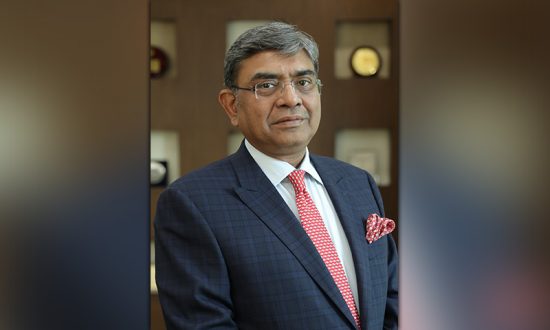The Covid-19 crisis has been sudden and unprecedented in magnitude. The pandemic struck India in March 2020 and on 25th March when India had reported only 500 cases, the country went into a nationwide lockdown. Enforcement of lockdowns and closing of countrywide borders significantly impacted the economic activities. Almost all the top global institutes including IMF, World Bank, and Moody’s among other trimmed India’s growth. However, the policymakers acted swiftly and released timely fiscal and monetary measures to respond to the COVID-19 crisis.
The Government of India has been undertaking proactive and fast track measures to safeguard its people, economy, trade and industry against the wild tide of pandemic COVID-19 in this extremely difficult time. The series of stimulus announcements by the Government in last 7-8 months under the AatnmaNirbhar Bharat Abhiyaan 1.0, 2.0 and 3.0 along with the measures undertaken by the RBI has taken the total of stimulus package to the level of around Rs 29.9 lakh crores, which is highly laudable and encouraging.
Measures and reforms announced under the AatmaNirbhar Bharat Abhiyaan 1.0 including reforms for MSMEs, especially the provision of collateral free automatic loans; opening up of all sectors to the private sector; reforms for improving ease of doing businesses, employment generation; ramping up health and digital educational infrastructure; relief measures for agriculture and rural sector; structural reforms in areas of coal, minerals, defence, airports and aerospace management, power, space sector, atomic energy sector and civil aviation; among others, were highly appreciable.
These will go a long way in our fight against economic distress, reviving and boosting the morale of agriculture, industry and most importantly each citizen of the nation and will significantly push industrial and socio-economic development in the country.
Under AatmaNirbhar Bharat Abhiyan 2.0, the government announced meaningful and calibrated measures to stimulate consumer demand, boost capital expenditure. These included LTC Cash Voucher Scheme; one-time restoration of the Festival Advance to the Government employees; provision of a 50-year interest-free loan of Rs 12,000 crore for capital expenditure by the states and; proposed allocation of Rs 25,000 crore for capital expenditure on roads, defence infrastructure, water supply, urban development and domestically produced capital equipment.
Recently, the Government announced bold economic reforms under AatmaNirbhar Bharat Abhiyaan 3.0, such as Aatmanirbhar Bharat Rozgar Yojana, an extension of Emergency Credit line Guarantee scheme, Production Linked Incentive Scheme for 10 champion sectors, reduction in the Performance Security on contracts, income tax relief to developers and home buyers, among others. These will have a multiplier effect on the economic growth trajectory through enhanced demand, job creation, increased private investments, escalated exports and growth of sectors that have strong backward and forward linkages.
The recovery in the key economic and business indicators on the back of a string of economic reforms announced by the Government in last 8 months have instilled the expectations of a strong, sustainable and even positive growth in Q3 FY2021 with a robust resumption of the lost economic activity. At this juncture, rural resilience and pent-up of demand activity are supporting the economic activity at this juncture to rejuvenate it from the extreme lows caused by the daunting impact of COVID-19.
There has been an improvement in GDP growth in Q2 2020-21 at (-)7.5% from the lows of (-) 23.9% in the previous quarter. The recent growth projections by the RBI, such as positive growth in H2 FY2021 and revised real GDP growth rate at (-)7.5%, are inspiring and will build confidence in the economic and business activities, going forward.
These growth projections by RBI are very encouraging and in line with expectations as PHDCCI EBM Index (Economic and Business Momentum Index) released in November 2020, which has projected that GDP growth will become positive from Q3 FY 2020-21 at around 0.1% to 2%, around 2% to 4% in Q4 FY 2020-21 and the overall growth for the FY 2020-21 is expected to contract by not more than 7.9% on the back of various effective reforms undertaken by the government during the last few months to lift the economy from the daunting impact of COVID-19. According to the PHDCCI EBMI, India is expected to bounce back with a recovery rate of 7.7% in FY 2021-22 backed by continuous government support in encouraging domestic demand by promoting make in India. According to the recent growth estimates by the International Monetary Fund (IMF), India is projected to become the fastest growing economy among the top 10 major economies in the world economic system from 2021 to 2025.
At this juncture, demand creation along with increased spending on infrastructure will have multiplier effects on the economic growth trajectory by boosting private investments, creating new employment opportunities in the country, generating demand for commodities such as steel, cement and power.
The planned Rs 111 lakh crore investment in the National Infrastructure Pipeline (NIP) has a great potential to boost the GDP growth of the country as the correlation between the investment in infrastructure and economic growth is quite high.
Immediate policy attention is required towards reviving the economic and business parameters which are yet to show recovery, particularly credit to Industry and credit to the services sector. The focus should be on ensuring the provision of hassle-free disbursement of loans vis-à-vis enhanced liquidity for MSMEs, especially in rural sectors.
The focus should be on providing a competitive edge to the domestic businesses by enhancing Ease of Doing Business and simultaneously reducing the Cost of Doing Business in the country including the costs of capital, costs of compliances, costs of logistics, costs of land and availability of land and costs of labour
Further, the continuous facilitation of industry and further effective implementation of reforms at the grassroots level with enhanced synchronization between Central and State Governments are still crucial for the fruitful outcomes.
Going ahead, to achieve the vision of AatmaNirbhar Bharat and economic size of US$5 trillion, rejuvenating economic growth has become a national imperative to fulfil the aspirations of over 1.3 billion people.


